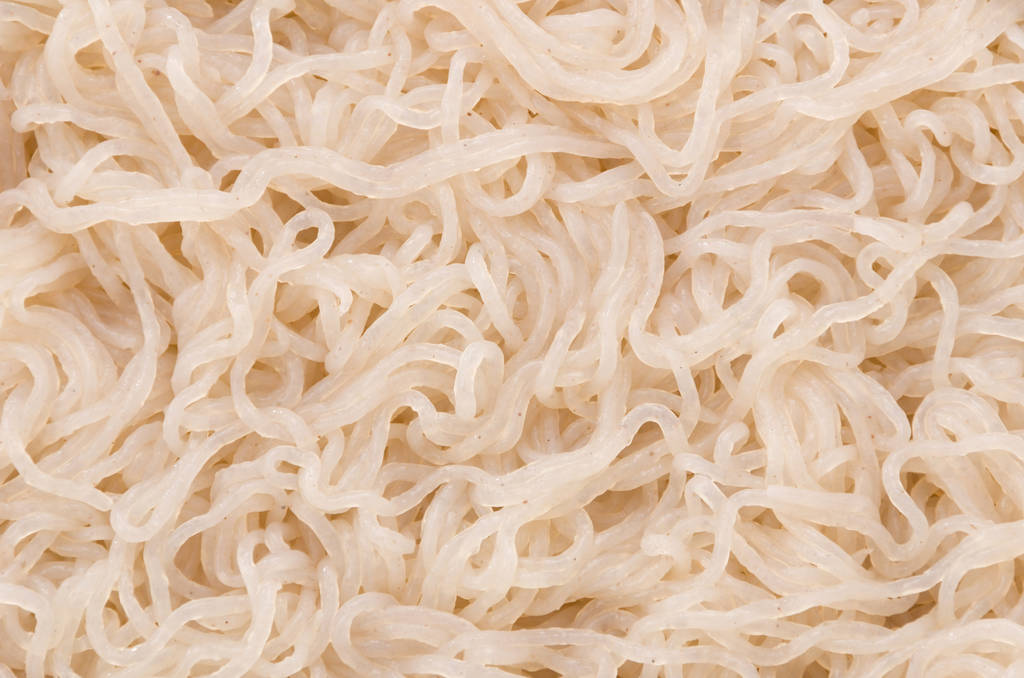Noodles made from the konjac root are advertised as an unrepentant indulgence. Unfortunately, they are not sustainable. Find out here what exactly the konjac root and konjac noodles are all about.
What is Konjac Root?
The konjac root is the tuber of the devil’s tongue, a plant species from the genus Titan Arum that grows in Asia. The konjac root is used there as a thickening agent in confectionery or for the preparation of a tofu-like mass or noodles. It has become known to us primarily for its appetite-suppressing and satiating properties.
On the one hand, the root has hardly any calories, but on the other hand it has an enormous swelling capacity. This is because it consists of about 40 percent so-called glucomannans. Glucomannans are soluble dietary fibers that can bind a lot of water, but have no nutritional value themselves. In the intestine, they absorb liquids and swell up as a result. They fill the stomach considerably and thus promote a long-lasting feeling of satiety and intestinal activity without increasing the energy content of the food, the calories.
That is why konjac noodles are popular
Konjac noodles, konjac rice, konjac lasagne sheets – all these products have very little to do with classic pasta or ordinary rice, because they are not made of grain. Instead, they are made from water, konjac root flour and a stabilizer such as calcium hydroxide, which the manufacturer claims is harmless.
As a result, foods made from the konjac root are…
Low in calories: 100 grams of konjac noodles contain just about eight to 14 kilocalories. Normal pasta, on the other hand, has about 138 calories.
carbohydrate-free: Konjac noodles have no carbohydrates. 100 grams of ordinary cooked pasta has about 25 grams of carbohydrates.
Low-fat: Konjac noodles only have 0.2 grams of fat per 100 grams. But normal pasta is also healthy with 0.9 percent fat in terms of fat content.
very rich in fibre: the konjac flour used has a large portion of glucomannan, which fills you up quickly but pleasantly and stimulates digestion. Glucomannan is also said to be able to improve blood lipid levels (study), but whether this property also applies to konjac noodles has not been confirmed.
Gluten-free: Most types of pasta are made from grains containing gluten, such as wheat or spelt, and are therefore not suitable for people with celiac disease. Konjac noodles, on the other hand, can also be enjoyed by people with gluten allergies without any problems.
Vegan: There are no eggs in the konjac noodles. But ordinary durum wheat pasta is also egg-free.
quick and easy to prepare: the konjac noodles come pre-cooked from the pack. All you have to do is wash them off and warm them up. Because they are quite tasteless, you can process them in many ways and create a wide variety of pasta dishes from them.
These properties make konjac noodles very interesting as a pasta alternative for many. Figure-conscious people appreciate the feeling of fullness that sets in quickly, athletes are happy about the low fat content, people with celiac disease are happy about the lack of gluten, and people who are stressed out about the time are happy about the quick preparation method.

Konjac noodles: why they are not a sustainable alternative
Enjoying as much pasta as you want without worrying about calories – that sounds like the dream of many connoisseurs. But when it comes to sustainability, the konjac pasta leaves a lot to be desired.
The devil’s tongue, from which the flour for the pasta alternative is made, is native to East Asia, Japan, western and central China. So the raw material travels a very long way before we find konjac noodles on the local supermarket shelves. With their high consumption of energy and resources, such food transports are a major burden on the environment. On the other hand, wheat and spelled grow for conventional pasta in Germany and Europe.
Pasta made from local grain also has another decisive advantage over konjac noodles: it consists of more than indigestible fiber. Although whole grain pasta has calories and carbohydrates, it also offers vegetable proteins, vitamins B and E, minerals such as iron, magnesium, zinc, selenium and potassium, phytochemicals and fiber. Even conventional pasta fills you up and can be part of a calorie-conscious, healthy diet if you enjoy lots of vegetables and light sauces with it.
Another environmentally friendly alternative to konjac noodles, which is also low in calories and low-carb, are vegetable spaghetti, which you can make yourself from vegetables using a vegetable peeler or spiralizer. Because they are also rather tasteless, you can season them with a wide variety of delicious sauces, herbs and spices.

